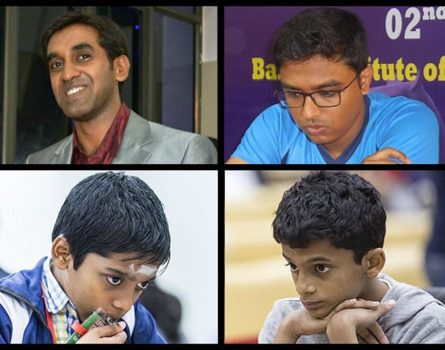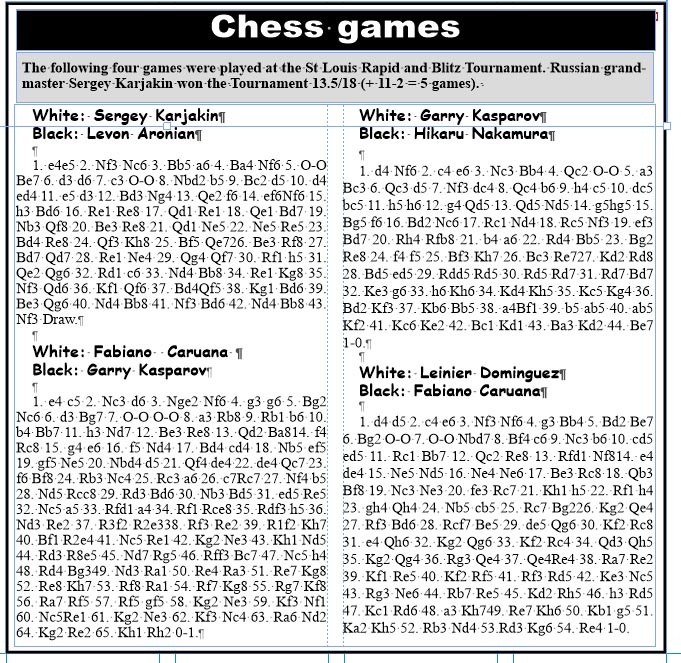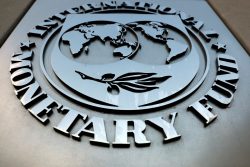In his largely entertaining and insightful book, Grandmasters of Chess Pulitzer prize winner and music critic/chess correspondent for the New York Times, Harold C Schonberg, tells us about the origin of the word grandmaster.
 The title was formally conferred in Russia in 1914, at the great St Petersburg chess tournament by Tsar Nicholas 11. He named the five finalists of the St Petersburg tournament—Emanuel Lasker, Jose Raul Capablanca, Alexander Alekhine, Siegbert Tarrasch and Frank Marshall—grandmasters of chess.
The title was formally conferred in Russia in 1914, at the great St Petersburg chess tournament by Tsar Nicholas 11. He named the five finalists of the St Petersburg tournament—Emanuel Lasker, Jose Raul Capablanca, Alexander Alekhine, Siegbert Tarrasch and Frank Marshall—grandmasters of chess.

They were the original grandmasters of history. ‘Grandmaster’ suggests a person at the highest level of ability or achievement in any field. The title grandmaster is awarded to chess players by the World Chess Federation (FIDE). Apart from a world champion, grandmaster is the highest title a chess player can attain. Once awarded, it remains with the player for life. FIDE made the title official in 1950. There is also a women’s grandmaster title with lower requirements. However, women are free to compete for the men’s grandmaster title.
According to the April 2017 FIDE rating list, there were 1552 chess grandmasters worldwide of which 1517 were men and 35 were women. Obviously, there are more men who are professional chess players than there are women. Russia heads the list of grandmasters with 240, the USA is second with 94, Germany has 91, Ukraine 89 and Serbia 57. These are the top five nations with chess grandmasters. But numbered among the nations with the top ten chess players worldwide are India, which has 49 grandmasters, France 48, China 42 and Armenia 38. Cuba is the only Caribbean nation mentioned in the list of chess grandmasters. It has 22 grandmasters.
India has been causing a stir in chess circles as it gets set to determine who would become the nation’s 50th grandmaster. There is a fair number of contenders. Eyes, however, are on R B Praggnanandhaa, 12, and Nihal Sarin, 13, the youngest of the hopefuls.

 Russia’s Sergey Karjakin holds the record for being the world’s youngest grandmaster. He achieved the title at 12 years, seven months. Pragg, who turned 12 on August 10, has a rare opportunity of breaking Karjakin’s record. Pragg has to achieve his three remaining grandmaster norms in three serious tournaments in another seven months, if he is going to become the new title holder.
Russia’s Sergey Karjakin holds the record for being the world’s youngest grandmaster. He achieved the title at 12 years, seven months. Pragg, who turned 12 on August 10, has a rare opportunity of breaking Karjakin’s record. Pragg has to achieve his three remaining grandmaster norms in three serious tournaments in another seven months, if he is going to become the new title holder.









